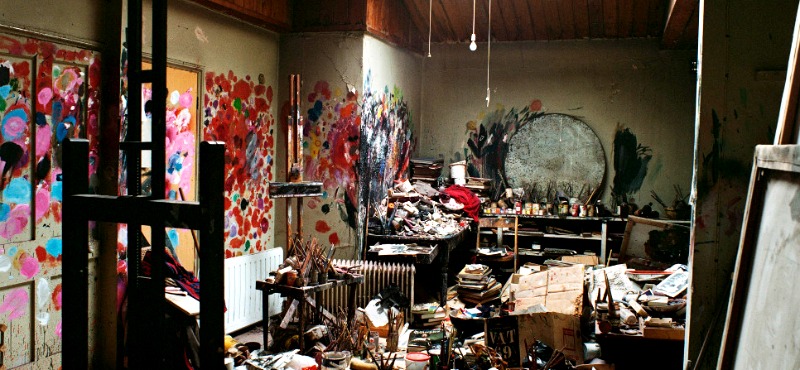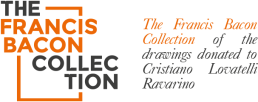Open letter to Margarita Cappock by Umberto Guerini

I am sure you know the long story of the case of the drawings donated to Cristiano Lovatelli Ravarino by Fancis Bacon.
If not, you can find the official documents, evidences, expert opinions and exhibition’s catalogues in www.francisbaconcollection.com.
I have often thought to write you, but then I didn’t: it was not yet the moment because some important things had to happen and be clarified.
I think that this time has come.
For many reasons that I would very happy to tell you if you will be so kind to meet me where and when you would decide to choose.
In the meantime I am very plesed to sand you some considerations inspired by one of your article.
In February 2003, The Burlington Magazine ( Vol. 145, No. 1199, pp. 73-81) published your study entitled “Works on Paper by Francis Bacon in the Hugh Lane Gallery, Dublin”.
In it I read :
“ When the Hugh Lane Gallery, Dublin, received the donation of the entire contents of Bacon’s studio in August 1998, the subsequent cataloguing of every single item, amounting to 7,500 entries, proved extremely rewarding and a number of important revelations have been made about the artist’s life, inspiration, unusual techniques and working methods.
The most important discovery was a considerable quantity of works on paper by Bacon.
These are significant for a number of reasons, not least because Bacon persistently denied that he ever made preliminary sketches for his paintings.
This article explores the controversy surrounding the existence of these works on paper, their relationship to Bacon’s finished paintings and what they reveal about the artist’s thought processes and working methods.”
And more:
“The notion that Bacon did not draw derives from interviews between the artist and David Sylvester, the critic and curator most closely associated with the artist. These interviews were broadcast on both radio and television and, first published in book form in 1975, have been reprinted several times with the inclusion of additional interviews. In the first one, of October 1962, the following exchange took place:
“ David Sylvester:
And you never work from sketches or drawings, you never do a rehearsal for the picture?
Francis Bacon:
I often think I should, but I don’t.
It’s not very helpful in my kind of painting. As the actual texture, colour, the whole way the paint moves, are so accidental, any sketches that I did before could only give a kind of skeleton, possibly, of the way the thing might happen.”
“This stance was maintained until Bacon’s death in 1992 and went relatively unchallenged.
However, in David Sylvester’s “ Looking Back at Francis Bacon” ( 2000), he referred to the artist’s drawing as his “secret vice”.
He defended his own position by stating: “… I, for my part, wasn’t being entirely truthful with him when in that interview, as in others from 1962 on, I courteously refrained from mentioning a series of small pencil sketches for paintings which I had seen in the endpapers of his copy of a paperback edition of poems by Eliot.
However, I had been gullible enough not to have realized that these were the tip of an iceberg. “
“Since the artist’s death, a considerable number of drawings, both by Bacon and attributed to him, have surfaced.
In 1996, six drawings and one over-painted item were exhibited in the Francis Bacon retrospective at the Centre Georges Pompidou in Paris but these were seen as being rare examples.”
Then in 1997-98, the Tate Gallery in London acquired a number of Bacon drawings and these were exhibited there in early 1999. The provenance of the Tate drawings, some forty works in total, is of interest. In the 1950s, Bacon had given four of these drawings to the poet Stephen Spender who was a close friend and had written articles on the artist. The other drawings acquired by the Gallery were also gifts, in this instance to Bacon’s longstanding friends Paul Danquah and Peter Pollock who had kept them until after Bacon’s death.
Another archive of drawings and sketches, allegedly by Bacon, surfaced in Italy.
Christian Ravarino, an Italian- American journalist, originally owned this material, but it has now been sold and dispersed among several Italian collectors.
Then there is the Joule archive, a controversial body of work consisting of sketches and over-painted material attributed to Francis Bacon, which emerged in 1996. Barry Joule, an amateur artist who met Bacon in 1978, claims that he was given the material shortly before Bacon’s departure for Madrid where he died in April 1992.
Although the material was first accepted as genuine by leading figures such as David Sylvester and David Mellor, its authenticity has since been questioned. A selection was shown both at the Irish Museum of Modern Art, Dublin, and the Barbican Centre, London.
Further analysis and reserch is warranted before the authenticity of both the Ravarino material and the Joule archive is resolved.
Among various possible reasons why Bacon remained secretive about his drawings, one persuasive explanation was suggested by David Sylvester when he said that “ Early on [Bacon] decided that he couldn’t draw, and thereafter pretended that he didn’t”. Although Bacon was not a conventionally skilled draughtsman, drawing was often central to his admiration for several Old Masters and contemporaries. Indeed it was an exhibition of drawings by Picasso, seen by Bacon in Paris in 1927, that prompted him to become an artist. He profoundly admired Michelangelo’s drawings for “their grandeur of form and grandeur of image” and thought they were the greatest things he ever did. Of Giacometti he went so far as to say that “he never had any necessity to do sculpture or to paint, that he was able to do everything in his marvellous drawings”.
Another possible explanation for Bacon’s secrecy is that he may have believed that his own drawings, if shown, would be viewed unfavourably in comparison with the drawings of other artists. But most importantly, should he have admitted that he made drawings, Bacon would have dispelled the myth that his works on canvas were entirely spontaneous. However, on closer examination, the deliberate, studied quality of many of his paintings belies any notion that they were made without preliminary preparation or study.
“More than seventy works on paper were found in Bacon’s studio.
Given the rich diversity of this graphic material, several distinctions must be made between the different types of these works on paper. The most logical subdivisions are as follows: drawings on paper; hand-written notes by the artist; interventions that Bacon made on leaves torn from magazines, books, catalogues and photographs.
The drawings were executed on a variety of media including tracing paper, lined paper, chain-laid manufactured paper and the blank end-papers of books. Some are cursory sketches executed in either pencil or ink, including several earlier drawings.
Others are in ball-point or felt-tip pen and there are also some sketches in oil.
Most are monochromatic and all the drawings are unsigned and undated.
While there is an inherent difficulty associated with accurately dating these works, approximate dates can be assigned on a stylistic basis.
Some bear close similarities to finished paintings, whereas in other instances the links are less obvious.
Taken together, the material provides an excellent representation of the type of works on paper that Bacon produced from the 1930s onwards.”
“ These works on paper, along with others by or attributed to the artist, indicate that Bacon’s approach to painting was far more premeditated than he cared to admit.
While they may not compare favourably with works on paper by similarly significant artists, they have considerable value in illuminating Bacon’s method of selecting, defining and exploring his motifs as well as contributing to a fuller understanding of his creative process. His interventions on existing images reveal a direct engagement with his sources and offer intriguing insights when considered alongside his extant or destroyed paintings. His hand-written notes, which need further study beyond the scope of this article, provide an immediate, if sometimes obscure, record of his thought processes.
It is perhaps ironic that the best way to describe Bacon’s drawings is in his own words. When he said, “any sketches that I did before could only give a kind of skeleton”, he left us with a tellingly accurate description of his works on paper.
I apologiase for this very long quote.
But it is the best premise I am about to say :
the Cristiano Lovatelli Ravarino’s collection of the drawings given him by Francis Bacon has always been preserved intact as evidenced by the catalogue “Francis Bacon Works on paper” published in 2015 and by all the others previous and later pubbblications (www.francisbaconcollection.com) .
Specified this fundamental point of fact ,seeing at a glance what you says in your article, the following conclusions can be drawn:
- Francis Bacon used to draw from 1930 onwards;
- his approach to painting was far more premeditated than he care to admit;
- more of seventy works on paper were found in his studio;
David Sylvester is sure too that Francis Bacon use to draw.
In particular:
Bacon remained secretive about his drawings, because “ Early on decided that he couldn’t draw, and thereafter pretended that he didn’t ”.
Although Bacon was not a conventionally skilled draughtsman, drawing was often central to his admiration for several Old Masters and contemporaries. Indeed it was an exhibition of drawings by Picasso, seen by Bacon in Paris in 1927, that prompted him to become an artist. He profoundly admired Michelangelo’s drawings for “ their grandeur of for the grandeur of image “ and thought they were the greatest things he ever did. Of Giacometti he went so far as to say that “ he never had any necessity to do sculpture or to paint, that he was able to do everything in his marvellous drawings“.
In addition to the David Sylvester’s considerations, you thinks that:
- another possible explanation for Bacon’s secrecy is that he may have believed that his own drawings, if shown, would be viewed unfavourably in comparison with the drawings of other artists;
- but most importantly, should he have admitted that he made drawings, Bacon would have dispelled the myth that his works on canvas were entirely spontaneous;
- however, on closer examination, the deliberate, studied quality of many of his paintings belies any notion that they were made without preliminary preparation or study.
I am not an art critic: I am the lawyer charged by Cristiano Lovatelli Ravarino in 1997 of his defense togheter with the defense of the drawings donated to him by Francis Bacon.
For twenty years I studied the case appropriately and I came to the your own conclusion: Francis Bacon use to draw and the works on paper he donated to Cristiano Lovatelli Ravarino are the most important and precious gift he did not only to his secret and close friend but to all of us. The collection has remained intact and I would be delighted to present it to you.
Thank you for your time.
Best regards
Umberto Guerini
